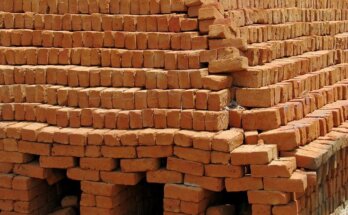Injection moulding machine are essential tools in the manufacturing industry, enabling the production of complex parts and products from various materials. However, like any piece of machinery, they are prone to issues that can affect their performance and efficiency. In this article, we will explore common problems faced by injection moulding machines and provide practical solutions to address them.

Table of Contents
Understanding Injection Moulding Machines
Injection moulding involves injecting molten material into a mould to create a specific shape. This process is widely used for manufacturing plastic parts and components. The key components of an injection moulding machine include the hopper, barrel, screw, nozzle, and mould. Understanding how these components work together is crucial for diagnosing and fixing issues.
Common Problems and Solutions
1. Inconsistent Product Quality
Symptoms: Variations in size, shape, or surface finish of moulded parts.
Causes:
- Improper material flow
- Inadequate cooling
- Incorrect mould temperature
Solutions:
- Material Flow Adjustment: Check the settings for injection speed and pressure. Ensure that the material is adequately melted and flows consistently into the mould.
- Cooling System Check: Inspect the cooling channels in the mould for blockages. Ensure that the cooling system is functioning optimally and that the cooling time is sufficient.
- Mould Temperature Control: Use a temperature controller to maintain the correct temperature throughout the moulding process. Consistent temperatures lead to uniform part quality.
2. Short Shots
Symptoms: Parts that are incomplete or missing sections.
Causes:
- Insufficient injection pressure
- Low material temperature
- Blocked nozzle or runner
Solutions:
- Increase Injection Pressure: Adjust the pressure settings on the machine to ensure that the material is injected forcefully enough to fill the mould completely.
- Material Temperature Adjustment: Ensure that the material is heated adequately before injection. Use a temperature probe to check that the material is within the optimal temperature range.
- Nozzle Inspection: Regularly clean the nozzle and runners to prevent blockages that can restrict material flow.
3. Flash
Symptoms: Excess material forming around the edges of the moulded part.
Causes:
- Excessive injection pressure
- Worn mould parts
- Incorrect mould alignment
Solutions:
- Reduce Injection Pressure: Lower the injection pressure settings to prevent excess material from being forced out of the mould.
- Mould Maintenance: Inspect the mould for wear and tear. Replace any worn components to ensure proper alignment and sealing.
- Check Alignment: Ensure that the mould halves are properly aligned during the injection process to prevent gaps that allow flash to form.
4. Bubbles or Voids in Parts
Symptoms: Air pockets or bubbles visible in the moulded parts.
Causes:
- Trapped air in the mould
- Low material temperature
- Poor venting in the mould
Solutions:
- Improve Venting: Ensure that the mould has adequate venting to allow trapped air to escape during injection. Add vents if necessary to enhance airflow.
- Material Temperature Management: Ensure that the material is heated properly to reduce viscosity, allowing it to fill the mould more completely and minimize the chance of air entrapment.
- Adjust Injection Speed: Increasing the injection speed can help push air out of the way and reduce the likelihood of bubbles forming.
5. Overheating
Symptoms: Unusual smells, smoke, or material degradation.
Causes:
- Faulty heating elements
- Incorrect temperature settings
- Poor material quality
Solutions:
- Check Heating Elements: Inspect the heating elements for signs of wear or damage. Replace any faulty elements to restore proper heating.
- Verify Temperature Settings: Regularly check and calibrate temperature settings to ensure they are within the recommended range for the material being used.
- Material Quality Control: Use high-quality materials to minimize the risk of overheating and degradation.
6. Machine Jamming
Symptoms: The machine fails to operate smoothly, and there may be a grinding noise.
Causes:
- Material blockages in the barrel or screw
- Incorrect material feed
- Worn or damaged components
Solutions:
- Inspect for Blockages: Regularly check the barrel and screw for material build-up. Remove any obstructions to allow smooth operation.
- Feed Mechanism Check: Ensure that the feed mechanism is functioning correctly and that the material is being fed properly into the machine.
- Component Inspection: Check for worn or damaged parts and replace them as necessary to prevent jamming.
7. Inadequate Cooling
Symptoms: Moulded parts remain hot and soft, leading to deformation.
Causes:
- Malfunctioning cooling system
- Incorrect cooling time
- Poor mould design
Solutions:
- Cooling System Maintenance: Regularly check and maintain the cooling system to ensure it is operating efficiently. Clean cooling channels to prevent blockages.
- Adjust Cooling Time: Increase the cooling time in the machine settings to allow parts to solidify properly before ejection.
- Mould Design Evaluation: If issues persist, consult with a mould designer to optimize cooling channels and improve heat dissipation.
8. Increased Scrap Rate
Symptoms: A higher percentage of rejected or defective parts.
Causes:
- Process variability
- Inconsistent material quality
- Operator error
Solutions:
- Process Standardization: Implement standard operating procedures (SOPs) to ensure consistent machine operation and reduce variability.
- Material Quality Checks: Regularly assess the quality of incoming materials to ensure they meet specifications before use.
- Operator Training: Provide training for operators on best practices and troubleshooting techniques to minimize human error.
Best Practices for Maintenance
To minimize the occurrence of these problems, regular maintenance of your injection moulding machine is essential. Here are some best practices:
- Routine Inspections: Schedule regular inspections to check for wear and tear on components and ensure all systems are functioning correctly.
- Cleaning Protocols: Establish cleaning protocols for the machine, particularly for the nozzle, barrel, and mould to prevent material build-up and blockages.
- Calibration: Regularly calibrate temperature and pressure settings to ensure they are accurate and consistent with material requirements.
- Training: Keep operators informed and trained on the latest techniques and maintenance procedures to enhance machine performance and reduce downtime.
- Documentation: Maintain thorough documentation of maintenance activities, repairs, and any issues encountered. This will help identify patterns and areas needing attention.
Conclusion
Injection moulding machines are complex pieces of equipment that can encounter various problems affecting their performance. By understanding common issues and their solutions, operators can troubleshoot effectively and maintain optimal machine operation. Regular maintenance, operator training, and adherence to best practices are key to minimizing downtime and ensuring the longevity of your injection moulding machine. With the right approach, you can keep your production running smoothly and efficiently, delivering high-quality moulded parts consistently. read more..




